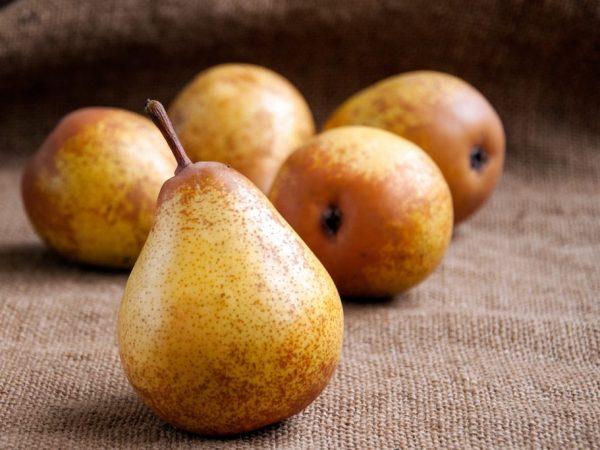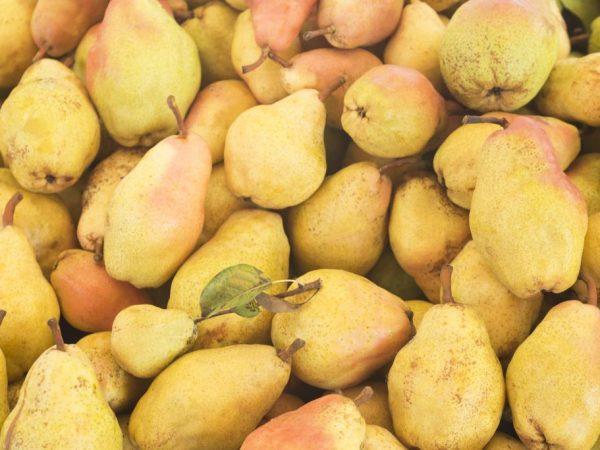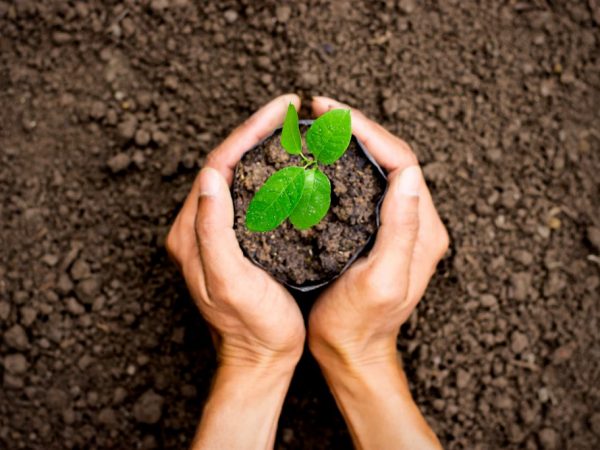Characteristics of pear varieties Thumbelina
The unpretentious pear Thumbelina, created for home gardens, pleases its owners with a harvest of delicate fragrant fruits every autumn.

Characteristics of pear varieties Thumbelina
Variety characteristic
The variety was named for the diminutive size of the fruit and the small size of the tree. The Thumbelina variety has a second name - Alyonushka. To create Thumbelina, domestic high-yielding varieties of winter pears, late frost-resistant Belgian, French varieties (Josephine Mechelnaya, Duchesse Angoulême, and others) were used.
Thumbelina is intended for breeding in central Russia, the Black Earth Region, in the southern lands of Siberia. The variety feels great in Moscow and the Moscow region, Kazakhstan and Belarus, it is able to withstand frosts of thirty degrees, but it is best for a tree in a climate with mild, wet winters.
Pear Alyonushka (Thumbelina) bears fruit in early autumn. To form the ovary, the variety needs the neighborhood of pear trees - it cannot pollinate on its own.
The pulp is distinguished by high taste, pleasant sweetness, delicate creamy consistency. The fruits of the variety can be stored for up to 4 months in a cool, dry place, do not rot, do not lose their shape during transportation.
Appearance
- short, weak tree, not exceeding 150 cm, prone to slow growth;
- has a round, slightly drooping crown;
- forms sparse branches of medium thickness that grow at right angles;
- has brown bark of branches with a brown tint;
- differs in smooth leaves with jagged edges;
- blooms with white, small, double flowers;
- produces small, short, egg-sized fruits that do not lose their sweetness even in rainy or cold summers

Fruits are small, about the size of an egg
Preparing for landing
Thumbelina begins to bear fruit 5-7 years after planting. The growth and development of the future tree depends on which seedling is chosen and how the planting is carried out.
Selection of seedlings
You need to buy a seedling from trusted producers (in stores or nurseries). The purchase of planting material from unknown sellers on the market threatens to buy the wrong variety, which is required or a dried, non-viable tree.
For planting, seedlings of one or two years old are selected, with a whole, without defects, upper part. The roots should be strong and developed, the bark should be solid and smooth. There should be 3-4 skeletal branches on the trunk.
Seedlings with shriveled bark, disturbed root system, developed leaves, and a small number of branches are categorically not suitable for planting.
Seat selection
Planting is best done in early spring or late autumn. Experts advise spring planting - during the summer period the seedling will have time to take root well and survive the winter safely. If planting is carried out in the fall, planting material is dropped in at an angle - the snow shelter will not allow the pear to freeze.
For planting, you need to choose areas with fertile, soft soil, without surface groundwater and the possibility of flooding. If possible, the site should be sheltered from the wind.
Planting process
The area selected for planting the pear is dug to the depth of the shovel bayonet, carefully cleared of weeds. The pit for planting should be 80 x 80 cm. At its bottom, at a distance of 30 cm from the center, a support is driven in - a long peg. The earth from the upper layers of the soil is folded separately.
The bottom is tamped, a pre-prepared mixture is poured onto dense soil, consisting of:
- buckets of earth;
- 10 kg. well seasoned manure;
- 3 tablespoons of phosphate and potassium fertilizers.

The area selected for planting the pear is dug to the depth of the shovel bayonet, carefully cleared of weeds.
A slide is formed from the soil mixture. A seedling is carefully placed on its top, the roots are straightened so that they look down. Planting is best done together: one person holds the stalk, gently shaking it periodically (this is necessary so that the roots are evenly covered with earth), and the second one covers the roots with earth, using first the separately stored soil from the fertile soil layer, then the rest (for convenience, they are stacked on different sides pits).
After planting, the neck should be 70-80 mm above the soil level. The ground around the trunk is carefully trampled down to remove voids in the soil and watered with water (up to 30 liters). The soil is thoroughly mulched with peat, compost or manure, the trunk is tied to a peg.
If several trees are planted at the same time, then the distance between them should not be less than 3.5 - 4.0 meters. The soil in the near-trunk circles should be loose and constantly moist.
Care features
To maintain the high productivity of a pear tree, it is necessary to properly care for it:
- monitor the cleanliness of the trunk circle, regularly loosen the soil on it;
- water, if necessary, at the rate of 30 liters of water per square meter of the near-stem area;
- carry out activities for the destruction of pests (leaf rollers);
- apply fertilizer under the tree 2 times a year in summer and after fruiting;
- pruning every fall, which forms the correct crown of the tree, increases the yield.
Pear Thumbelina, with proper care, will become an adornment of any garden and will delight the owners with a stable harvest of fragrant fruits.


